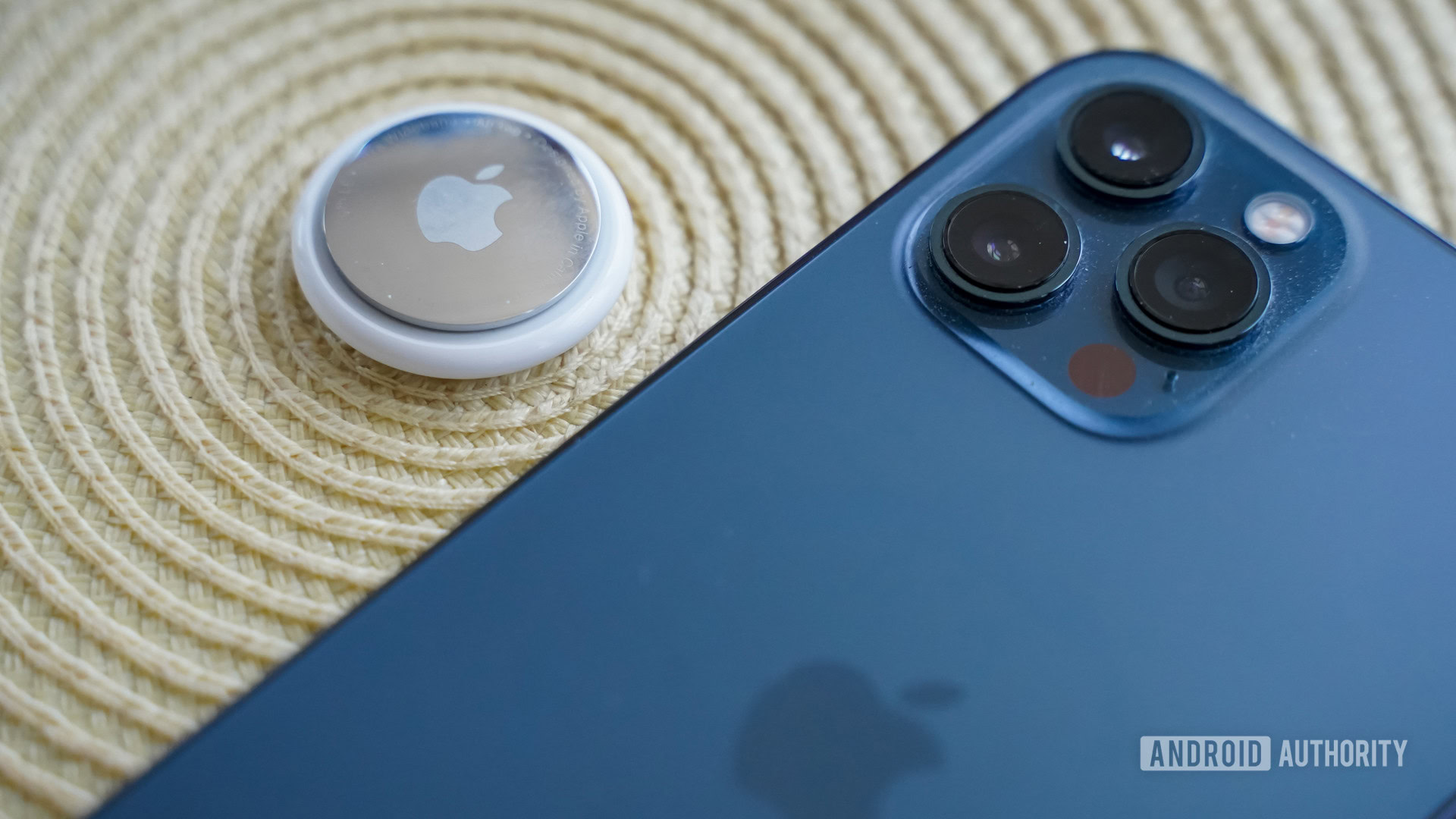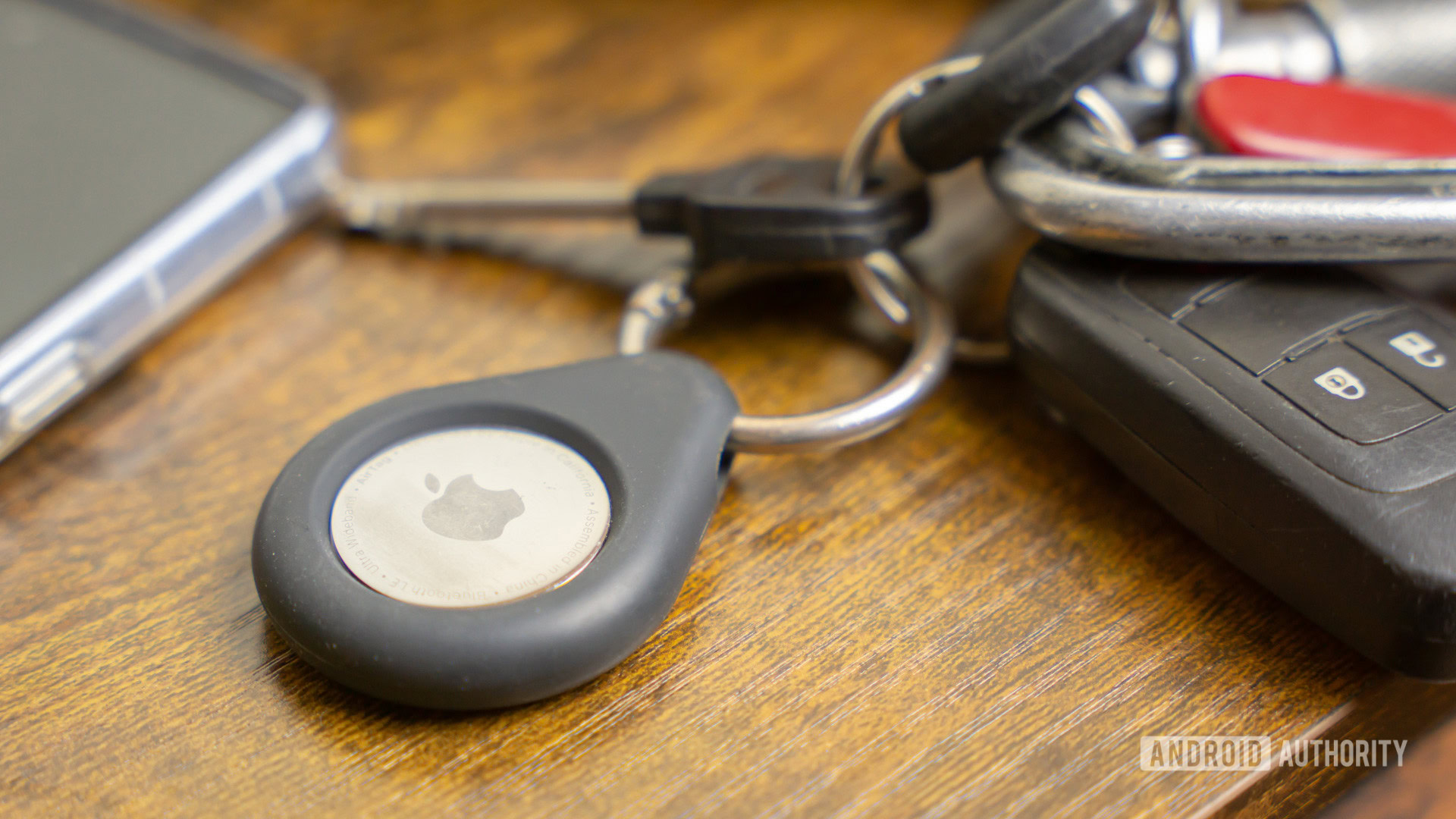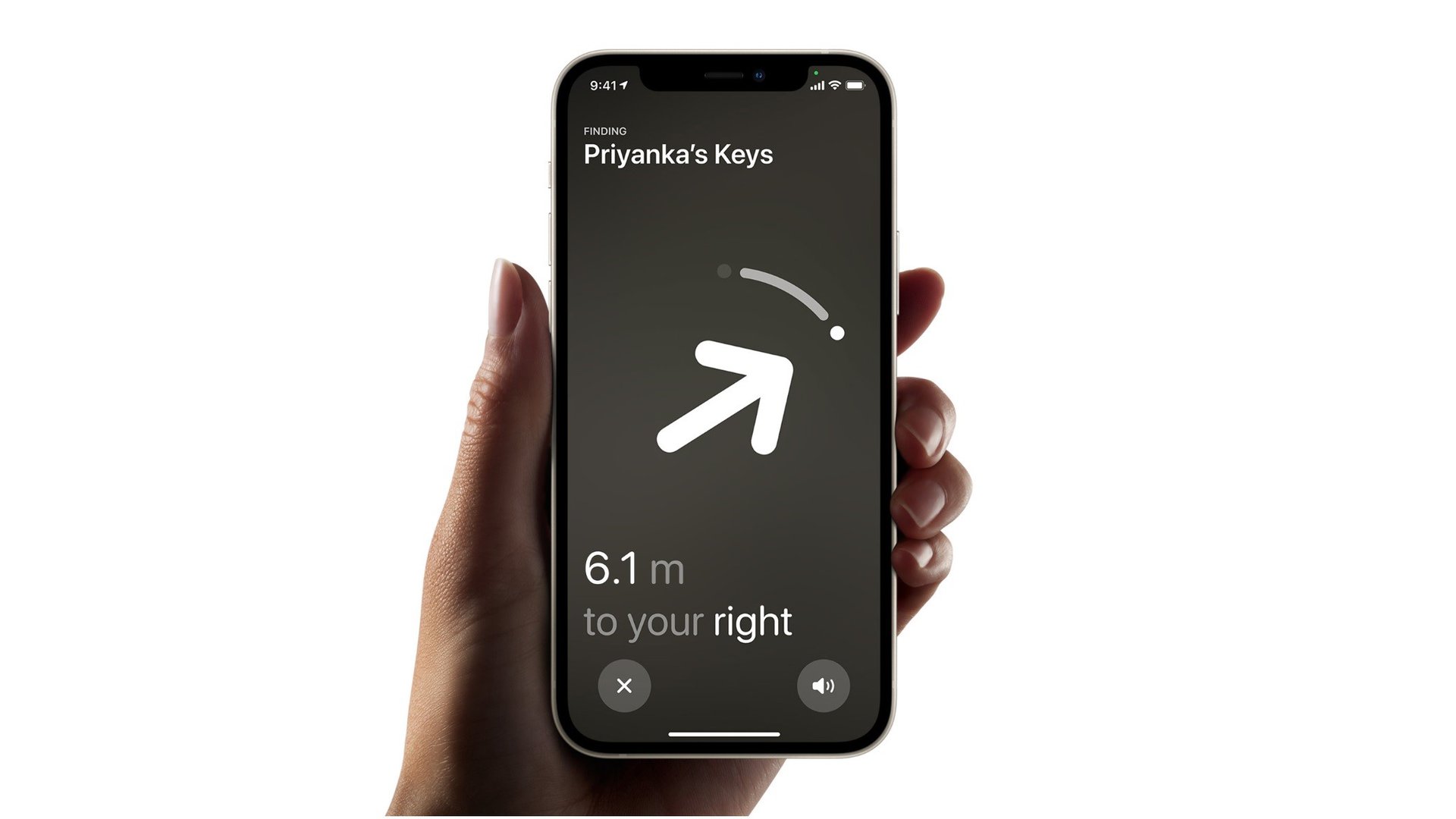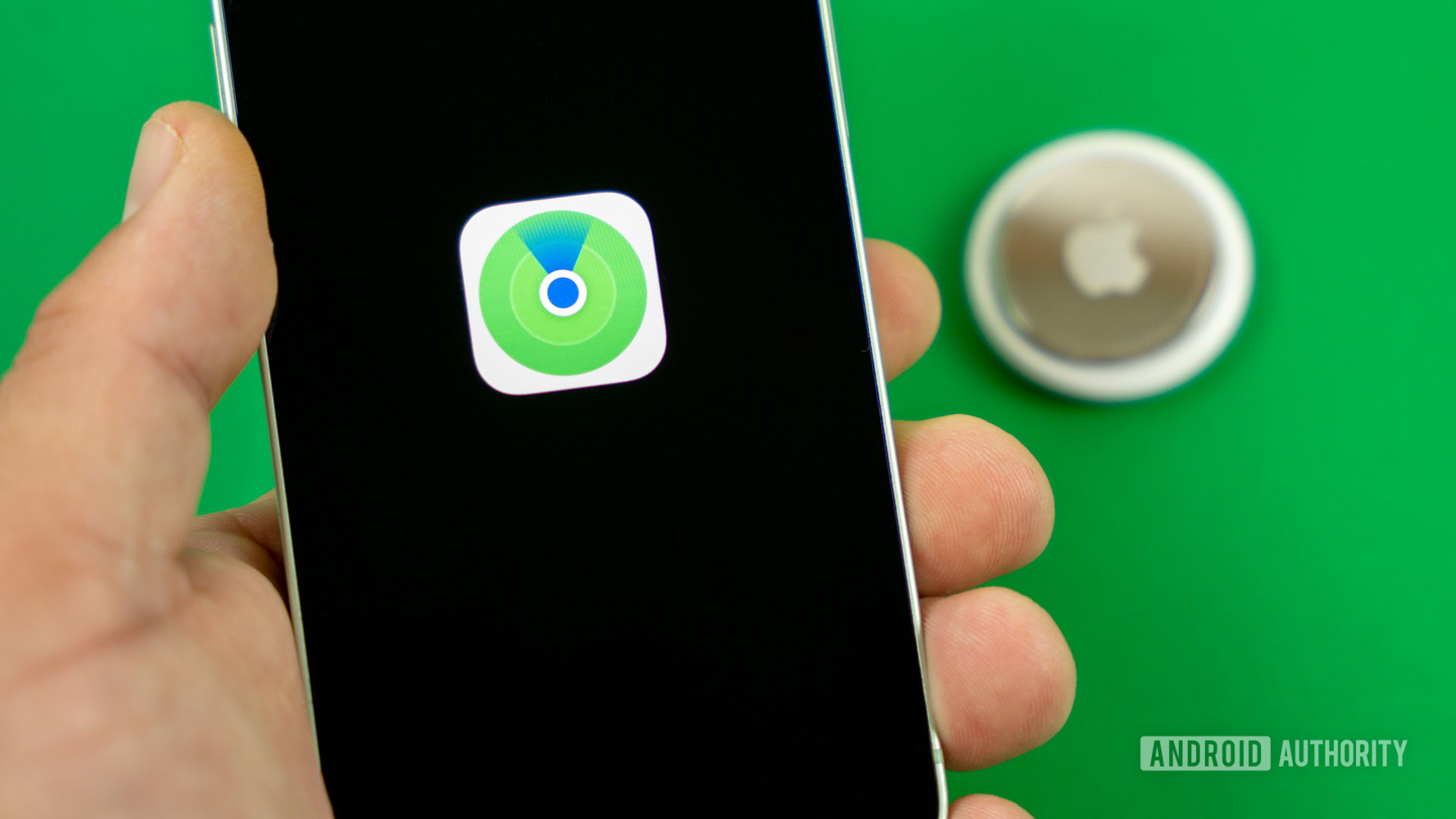Affiliate links on Android Authority may earn us a commission. Learn more.
How do Apple's AirTags work? Bluetooth and Ultra Wideband explained

Smart trackers like the Apple AirTag use a mix of wireless technologies to help keep track of your luggage, wallet, and other personal effects. Indeed, they can come in handy if you tend to misplace your belongings or forget where you’ve left your car keys. Newer models can even inform you of their whereabouts remotely, allowing you to track them from a different city altogether. Here’s everything you need to know about how smart tracking tags like AirTags work.
QUICK ANSWER
The Apple AirTag uses Bluetooth Low Energy (BLE) to signal its whereabouts to nearby Apple devices. When you need to narrow down its location, it can also turn on its Ultra-Wideband (UWB) radios. This enables them to offer positional guidance down to a few inches. Keep reading to learn more.
JUMP TO KEY SECTIONS
What is an AirTag?

The AirTag is an Apple-invented wireless tracker that’s roughly the size of a US quarter. Compatible only with iOS devices, the AirTag can track anything from keys to wallets, pets, bicycles, and luggage. Due to their small size, they can be used to track almost anything. They can be hung from a keyring fob or slipped into whatever needs to be tracked.
The AirTag relies on Apple’s Find My network to work. Every time the AirTag comes within Bluetooth distance of any iOS device (around 10 feet), it pings the location of that AirTag to Find My, thereby updating its location on the map. If you have lost the item attached to your AirTag, you merely have to look at the Find My map to see its current location. You can also have the AirTag play a pinging sound so you can close in on its location. And if you own a recent iPhone, you can even get directional guidance to the tag’s precise location (pictured below).
You will get faster, more accurate location results if you live in a busy, more populated area. A bigger area means more people, which means more iOS devices pinging that location back to Find My all the time.
How does an AirTag work?

The Apple AirTag works by using Bluetooth Low Energy (BLE) to communicate with your smartphone. It’s worth noting that modern smart trackers also send out Bluetooth signals that any smartphone can pick up in the vicinity — not just your own. These nearby smartphones routinely upload your tag’s location to the cloud, allowing you to see its last known location on a map from anywhere in the world. Apple calls this the Find My network.
While Bluetooth works well enough to approximate a tag’s location, it doesn’t help narrow down the search once you’re within a few meters of it. For this reason, the AirTag also includes Ultra-Wideband (UWB) technology.
Apple AirTags use both Bluetooth and Ultra-Wideband (UWB) technologies to signal their whereabouts.
In a nutshell, UWB is a short-range wireless communication protocol that co-exists alongside existing standards like Wi-Fi, Bluetooth, and NFC. Unlike those protocols, however, UWB enables exact location tracking down to a few inches. This allows your phone to precisely guide you to the tag’s exact location once you’re within UWB range, as pictured above.
Apple’s smartphones since 2019, up to the latest iPhone 15 series, all support UWB. Even though plenty of Android flagship phones support UWB, you cannot use them with an AirTag.
Don’t worry if your smartphone doesn’t include UWB or you’ve purchased a Bluetooth-only tracker. Virtually all tags on the market also feature an onboard speaker and can play a sound from their companion apps. You’ll need to be within range of the tag, though.
An AirTag can work over hundreds of feet if you don’t have any obstructions in the way. That said, you can track an AirTag anywhere in the world as long as it’s in proximity to someone else’s iOS device.
How to set up and use AirTags

If you’ve decided to pick up an AirTag, keep in mind that you’ll need an iPhone to use it to its full potential. That said, you can set one up using an iPad if you’re willing to sacrifice precision finding. This is because precision finding relies on UWB technology, which Apple only includes on the iPhone. You also cannot connect an AirTag to your Apple ID using an Android phone at this time. It’s a frustrating limitation, but keep in mind that Android devices don’t contribute to Apple’s Find My network either.
Assuming you own an iPhone or iPad, though, setting up an AirTag doesn’t take much effort. Simply follow these steps:
- Unbox the AirTag from its packaging and remove the protective wrap surrounding it. This wrap prevents the AirTag from turning on while it’s still in the box.
- Unlock your iPhone or iPad and wait for it to detect a new AirTag.
- Within 30 seconds, you should see a pop-up asking whether you’d like to pair the AirTag to your account.
- Simply follow the on-screen instructions to set a name and icon for your AirTag.
If you’re wondering when you should use an AirTag, it’s fairly straightforward. Any object that you may lose is the perfect candidate for an AirTag. For example, you can now buy wallets, keychains, and even backpacks with integrated AirTag holders.
Yes, you can use an AirTag to track your luggage in North America. However, some rare international airlines may restrict carrying devices with lithium-ion batteries (including AirTags) in checked-in luggage.
Apple AirTag vs. Samsung Galaxy SmartTag2: What’s the difference?
While Apple’s AirTags work with just about any modern iPhone, most other third-party trackers on the market will only work if you have the corresponding app installed on your device. This includes Samsung’s Galaxy SmartTag2 tracker.
Upon unboxing a new smart tag, you’ll first be prompted to pair it to your account. This is usually as simple as holding the tag close to your smartphone and following the on-screen prompts. Once you’ve linked a smart tag to your account, you should be able to track its location from the accompanying app. With UWB, as explained above, your phone should also be able to offer positional guidance to the tag.
If you’re not within Bluetooth or UWB distance of a paired AirTag or Galaxy SmartTag, you may still be able to access its last known location. In fact, your chances of finding it improve if it’s in a busy or populated area. This is because strangers walking past your tag will have their smartphones automatically detect it and upload its location to the Apple Find My and Samsung SmartThings Find networks.
As of the time of writing this article, however, Apple’s AirTag has the highest adoption rate in the object tracker market. The fact that every single iPhone and iPad will also report the location of your trackers helps improve your chances of finding lost items too. That said, Google has started working on a similar global Find My Device network so we should see the accuracy of Android-based trackers improve in the future.
FAQs
The AirTag uses Bluetooth, which works up to a distance of 30 feet. For accurate directions with UWB, you may need to be even closer. If you’ve lost the AirTag, you can use Apple’s Find My network to get the approximate location of an AirTag anywhere in the world as it also pings nearby Apple devices.
AirTags do not use GPS. Instead, they communicate with any iPhone or iPad in the vicinity. These devices then upload the AirTag’s last known location to Apple’s Find My network, which puts them on a map. Once you’re close enough, you can use Bluetooth or UWB to track down the AirTag’s exact location.
The AirTag does not work with Android even though it uses Bluetooth because only the iPhone supports the Find My app. Apple devices also have built-in software that tracks nearby AirTags (even those you don’t own) and upload their location to the cloud.
The AirTag uses a common CR2032 coin-type battery that lasts around a year on average. Your iPhone will notify you once the AirTag’s battery gets too low.
The AirTag has basic water resistance but cannot survive underwater and may even fail under a steady stream of water like a faucet or heavy rain.
AirTags are not magnetic. While it does include small magnets as part of the speaker, it’s not enough to stick to objects.
Aviation authorities in the US and Germany have confirmed that the AirTag is allowed to be carried in check-in luggage. However, this may depend on your specific airline elsewhere in the world.